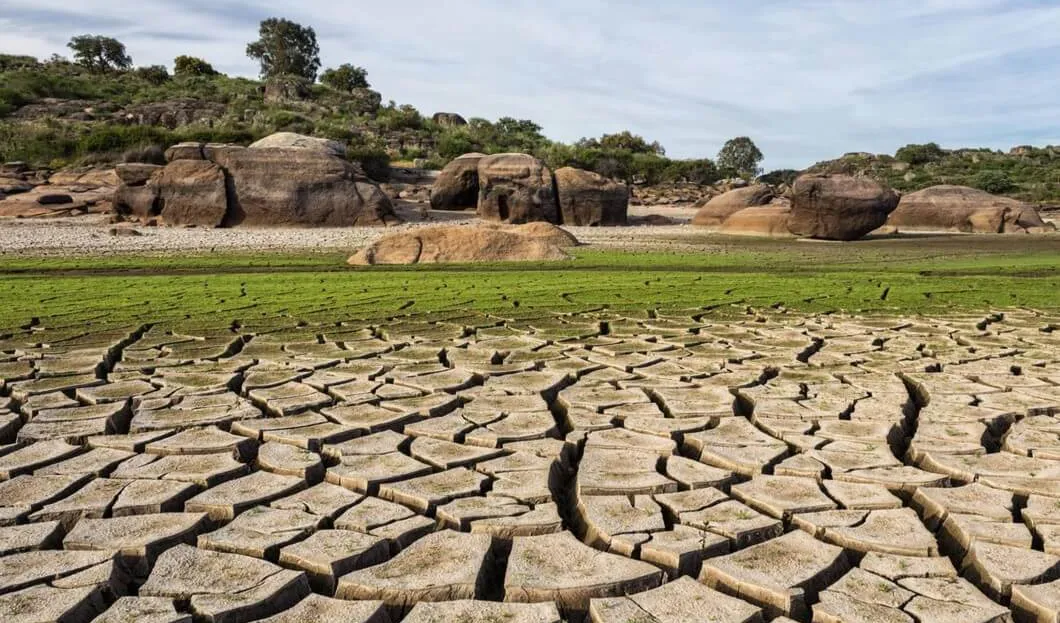
Anyone going to the beach in Barcelona these days, with temperatures already well above 20 degrees, will have to be prepared to stand in line. The capital of Catalonia has only one shower per beach in operation. The reason: an extreme drought that has lasted for many months and has now even led to restrictions on water consumption in over 200 municipalities in the region in northeastern Spain.
Similar, albeit less serious, problems are being experienced in Andalusia, as well as in other European vacation paradises. Shortly before the start of the summer season, therefore, it is not only tourism in southern Europe that is worried. More and more fans of southern Europe and elsewhere are asking themselves: Do I have to expect drained pools and shower bans on vacation?
The worries are not unjustified: In Catalonia, the reservoirs are only 26% full on average. A year ago, it was about 58%. There has already been extremely little rain in the region since the fall of 2021. Experts speak of the worst drought in Catalonia since records began in 1914, and researchers attribute the malaise largely to man-made climate change.
"Because of climate change, we should expect droughts to be even more frequent, intense and prolonged in the coming decades," warns Javier Martín Vide, a professor of physical geography at the University of Barcelona. Even in the short term, he says, the situation is not rosy. "There is no end in sight to this drought."
Despite water conservation measures adopted in late February, levels continue to drop rapidly. Farmers must consume 40% less water, and industry 15. Prohibitions include watering public and private green spaces and cleaning streets with drinking water. Plans to ban the filling of hotel pools and swimming pools were recently shelved. But private households in the affected areas with a total of six million inhabitants will hardly be able to enjoy their pools because of a consumption limit of 230 liters per capita per day, among other things.
If it's that bad now, what will it be like in the summer, when it rains less anyway, tourists arrive in droves, and water consumption skyrockets yet again? Especially since Spain is expecting a record number of visitors in 2023. In Lloret de Mar, a popular travel destination, 100,000 tourists will be added to the 40,000 inhabitants in the summer. On the entire Costa Brava, the "population" grows in August from 265,000 to about 1.2 million.
The situation in other popular tourist destinations is not much better. In Italy, there is particular concern in the north. Lake Garda, which is popular with tourists, and the Po, Italy's largest river, are suffering from extremely low water levels. But the tourism industry is also thinking about business and complaining about a "drought campaign" that could lead to massive damage to the region's image and a drop in visitor numbers.
"No one is hiding the fact that this is an exceptional situation, but the current water level of Lake Garda does not jeopardize any of the main tourist or sporting activities that take place here," quoted a representative of the Garda Region Tourist Board. Guests and employees, however, are urged to conserve water, she said.
Meanwhile, the drought is even creating new attractions to lure tourists. Last summer, Catalonia's authorities had to restrict access to the Sau Reservoir north of Barcelona because of the crowds of people who wanted to see the 11th-century church of Sant Romá, which would otherwise have been submerged. In Lake Garda, the island of San Biagio was suddenly accessible on foot earlier this year to the excitement of many because of the lack of water.
But that tourism increases pressure on biodiversity and water resources is undisputed. In France, too, most vacationers come precisely when the water is scarcest in summer. In one part of the Calanques National Park near Marseille, the crowding of visitors has led to severe erosion. In the meantime, Sugiton Bay can only be visited by reservation.
However, the industry is confident. "Already last year, the drought was worrying and yet, especially the professionals of water activities knew how to adapt. The season was very good," said François de Canson, president of the French tourism association ADN Tourisme, about southwestern France. This year, too, the professionals would adopt.
In any case, France, where individual areas depend heavily on the business of vacationers, is striving for sustainable tourism. It wants to reduce the sector's environmental footprint - as does the Spanish Mediterranean island of Majorca, among others - and invest more in sustainable tourism infrastructure.
Greece has not been overly affected by drought so far. The water reservoirs that supply the capital Athens, among other places, are well filled. On some islands in southern Aegean, however, drought has always been a problem; in some cases, photovoltaic systems are used there to turn seawater into drinking water. Nevertheless, Greek experts also complain about the consequences of climate change: Weather phenomena such as heavy rain and extreme heat waves have increased in recent years.










